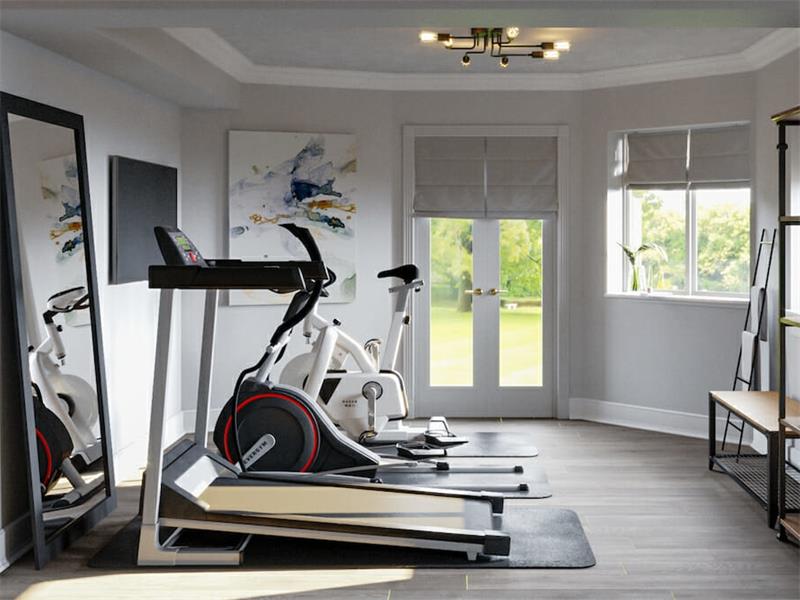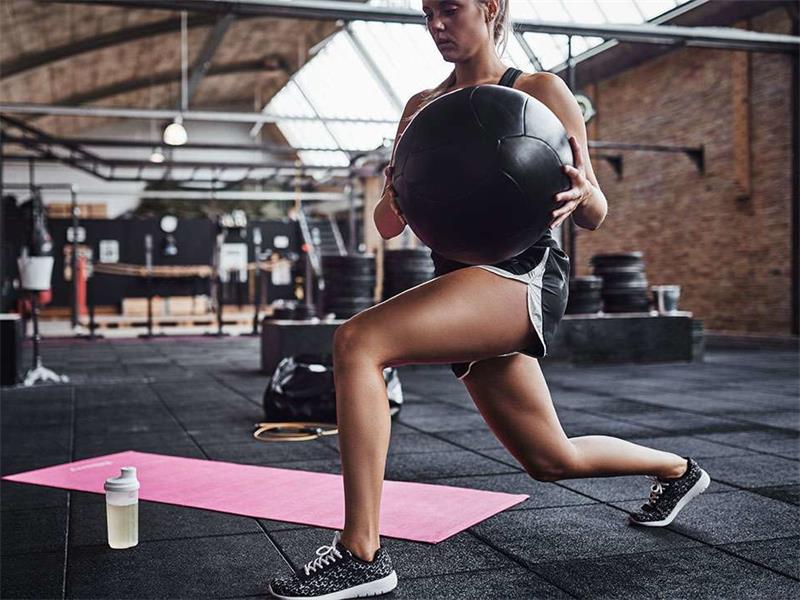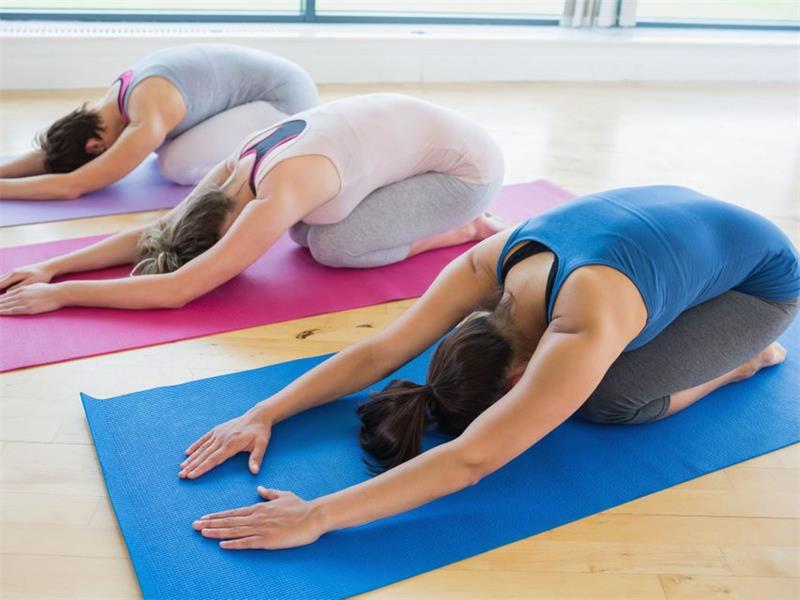Contents
Create a Home Gym on a Budget
Welcome to the ultimate guide on creating your perfect home gym without breaking the bank. A home gym is an ideal solution for those of us who desperately want to stay fit but just can’t make it to the gym.
With a home gym, you get complete control over your workout schedule and environment, which makes it much easier to stick to your fitness goals. In this article, we will discuss how you can create a fully functional home gym without spending a fortune.
We will cover everything from choosing the right space in your house, must-have equipment, and DIY alternatives for those who don’t want to break the bank on fancy machines. Plus, we’ll provide you with some tips on maintenance and safety so that you can get started with confidence.
The Benefits of Having a Home Gym
The benefits of having a home gym are endless; first and foremost, it saves time and money. No more traveling back and forth from the expensive commercial gyms or waiting in line for equipment – you have everything at your fingertips!
You’ll also have no restrictions regarding hours as there are no closing times at home gyms. Another advantage is that there’s no need to worry about what others think of how fast or slow you run or what type of exercises you do because when working out at your own place all distractions disappear, allowing 100% focus on yourself – which means better results!
Brief Overview of Cost-Saving Methods
If budget is an issue for you then never fear! There are plenty of ways in which costs can be reduced while still building an effective workout space.
Firstly: strategically choosing essential equipment can save hundreds (even thousands) compared with commercial/gym-priced equivalents. Secondly: DIY equipment alternatives are available to the creative and crafty, with each piece made to a personal specification, whilst also saving money.
: accessorizing your gym space with items such as foam rollers, yoga mats and workout towels can enhance the gym atmosphere without costing the earth! Stay tuned to learn more about creating your own budget-friendly home gym.
Determine Your Fitness Goals
Creating a home gym is an exciting venture, and before you begin purchasing equipment and designing the space, it’s important to identify your fitness goals. Setting goals allows you to create a targeted plan that will help you achieve the results you want. Whether it’s losing weight, building muscle, or simply improving overall health and wellness, knowing what you want to achieve will help guide your decisions when it comes to selecting equipment and designing workouts.
Importance of setting goals before creating a home gym
Without clear goals in mind, creating a home gym can become overwhelming and unfocused. You might end up purchasing equipment that doesn’t align with your interests or fitness level or wasting time performing exercises that aren’t helping you reach your objectives. By setting specific goals for yourself beforehand, you’ll be able to make informed decisions about what kind of equipment you need and which types of workouts will be most effective in helping you achieve your desired results.
In addition to providing a focus for your home gym journey, setting specific fitness goals can also help keep you motivated. When progress is slow or setbacks arise (as they inevitably will), having well-defined objectives can provide the extra push needed to keep going.
Tips for identifying your fitness goals
If you’re not sure where to start when it comes to goal-setting for your home gym journey, consider these tips:
- Create SMART Goals: make sure your objectives are specific, measurable, achievable, relevant/realistic, and time-bound.
- Think Beyond Weight Loss: while losing weight is often a top priority for many people’s fitness journeys, it’s important not to overlook other health-related areas like flexibility, stamina, and overall strength.
- Consider Your Interests: When choosing your goals, think about the types of exercise you enjoy. If you’re not a fan of traditional cardio, don’t make it a centerpiece of your fitness routine. Instead, consider incorporating activities like dancing or hiking that get your heart rate up without feeling like traditional “exercise.”
By taking the time to identify your fitness goals at the outset, you’ll be better equipped to design a home gym that is tailored to your individual needs and interests.
Choose the Right Space
Whether you have a large house or a small apartment, finding the right space for your home gym is important. You need to make sure you have enough room to move around and use your equipment comfortably.
Ideally, you want a space that is well-ventilated and has plenty of natural light. Here are some tips for identifying the best space in your home for a gym:
Identifying Your Space
Start by taking a look around your home and identifying areas that could be used as workout spaces. Perhaps there is an unused room or corner that could be repurposed. Maybe your garage or basement could be transformed into a home gym with some simple modifications.
Another option is to use multi-functional furniture pieces that can be easily stored away when not in use, such as folding exercise benches or adjustable dumbbells. Think outside the box and consider creative solutions like using outdoor spaces, such as patios or decks.
Creative Ideas for Utilizing Small Spaces
If you live in an apartment or have limited space, don’t worry – there are still plenty of ways to create a functional home gym. One option is to use vertical storage solutions, such as wall-mounted racks for weights or resistance bands.
You can also incorporate small pieces of equipment that don’t take up much space but still provide an effective workout, such as jump ropes or resistance bands. Another idea is to use furniture already in your home like chairs and tables as tools for bodyweight exercises.
If all else fails, consider investing in foldable equipment like yoga mats and foam rollers that can be easily stored away after each workout session. When choosing the right space for your home gym it’s essential to keep functionality in mind while making it fit into whatever living arrangement you may have available.
Don’t let size hold you back from creating a great workout space in your own home. With a little creativity and organization, even the smallest of spaces can be transformed into a functional gym.
Essential Equipment on a Budget
If you’re planning to create a home gym, you need to start with the basics. Investing in the right equipment can make all the difference in your workout routine.
Here’s a list of the must-have equipment for creating a basic home gym:
- Dumbbells or resistance bands: These are versatile tools that can help in strength training and toning. They are also relatively cheap and easy to store at home.
- Yoga mat: A yoga mat is not just for yoga! It provides cushioning for floor exercises and stretching, making it an essential component of any home gym.
- Kettlebell: Kettlebells have been growing in popularity due to their effectiveness in full-body workouts. They come in various weights and sizes, meaning you can get started with them regardless of fitness level.
- Bench: A bench makes it possible to do various exercises without needing a partner or other accessories. You can use it for chest presses, incline or decline bench presses, step-ups, and more.
- Jump rope: this simple piece of equipment is perfect for getting your heart rate up and improving coordination skills.
Tips for finding affordable equipment:
- Search online: You’ll find many online retailers that offer sports gear at discounted prices. Be sure to compare prices across different sites before making purchases.
- Sales: avoid buying things at full price by keeping an eye out for sales discounts or promotions from local retailers or online shops.
- Purchase used equipment: You can find great deals on used gym equipment from sites like Craigslist or Facebook Marketplace. Just make sure to inspect the condition of the equipment before purchasing it.
By investing in these must-have essentials, you can create your own home gym that is both budget-friendly and effective.
DIY Equipment Alternatives
Creative ways to make your own equipment at home
When it comes to creating a home gym, buying equipment can be expensive. However, you don’t have to break the bank if you get creative and make your own equipment.
One of the most versatile pieces of DIY gym equipment is a resistance band. You can use it for a variety of exercises, it’s easy to store, and it won’t take up too much space in your home.
To create a resistance band, all you need is an old bicycle inner tube and some paracord or rope. Another piece of DIY gym equipment that’s easy to make is a medicine ball.
A medicine ball can be used for exercises like squats, lunges, and Russian twists. To make one at home, all you need is an old basketball or soccer ball, some sand or water for weight, and some duct tape.
Examples of DIY equipment: Resistance bands and medicine balls
When it comes to DIY gym equipment alternatives, there are plenty of options out there. Resistance bands are incredibly versatile and can be used in place of weights for many different exercises.
To create your own resistance band at home, simply cut an old bike inner tube into strips and tie them together using a paracord or rope. Medicine balls are another excellent piece of gym equipment that you can easily make at home using everyday items like basketballs or soccer balls filled with sand or water.
Just wrap the ball in duct tape until the desired weight is achieved. Another piece of DIY gym equipment that’s easy to make is a pull-up bar.
All you need is some PVC pipes and connectors from your local hardware store! By assembling these components together into a sturdy frame that fits snugly into any doorway in your house (without damaging any paint), you’ll have an instant pull-up station for your home gym.
Why DIY Equipment Alternatives Can Be Better
DIY equipment alternatives are a great way to save money and get creative with your workouts. Not only can they be more affordable than buying equipment from a store, but they can also be customized to fit your specific needs and fitness goals.
By creating your own equipment, you’ll also have the satisfaction of knowing that you put in the effort to build something yourself. Another benefit of DIY gym equipment is that it’s often more compact and easier to store than commercial equipment.
For example, resistance bands take up very little space and can be easily tucked away in a drawer or closet when not in use. Plus, since these pieces of equipment are lightweight, they’re easy to move around if you need to change up your workout space or routine.
Creating DIY gym equipment is an excellent way to save money while still having access to all the benefits of a home gym. By getting creative with everyday items around your house, you can create versatile pieces of equipment that will help you achieve your fitness goals without breaking the bank.
Adding Cardiovascular Exercise without Breaking the Bank
Cardiovascular exercise is an important part of any workout routine, but it can be expensive to invest in a treadmill, stationary bike, or other traditional cardio equipment. The good news is that there are many affordable options for adding cardio to your home gym.
Suggestions for Affordable Cardio Equipment
One of the simplest and most affordable pieces of cardio equipment you can add to your home gym is a jump rope. Jumping rope doesn’t require much space and can be done virtually anywhere. Plus, it’s a great way to build endurance and improve coordination.
You can find jump ropes at most sports stores for as little as $5-$10. Another great option for affordable cardio equipment is a mini-trampoline.
Also known as rebounders, mini-trampolines are compact and provide a low-impact workout that’s gentle on joints. They’re also fun to use!
You can find mini-trampolines online or at fitness stores starting at around $40. If you prefer outdoor activities, consider investing in some good running shoes and hitting the pavement.
Running is one of the most effective ways to get your heart rate up and burn calories. It doesn’t require any equipment other than shoes and appropriate clothing.
Tips for Incorporating Cardio into Your Workout Routine
To make sure you’re getting enough cardiovascular exercise in your home gym routine, aim for at least 20-30 minutes of moderate-intensity activity per day. This could include jumping rope, using a mini-trampoline, going for a run outside, or doing bodyweight exercises like jumping jacks or burpees.
You don’t have to do cardio every day; every other day should suffice if you’re alternating with strength training exercises like weightlifting or resistance band workouts. Mix things up by trying different forms of cardio exercise.
This will keep your workouts interesting and help prevent boredom or burnout. If you’re not a fan of running, try cycling, dancing, or swimming instead.
Incorporating cardio exercise into your home gym routine doesn’t have to be expensive or complicated. With a bit of creativity and the right equipment, you can get all the benefits of cardiovascular exercise while staying within your budget.
Accessorize Your Home Gym
The Importance of Incorporating Accessories into Your Workout Routine
When it comes to working out, accessories can make a big difference in the effectiveness of your routine. They can also help you stay motivated and engaged in your workouts. Adding accessories to your home gym can enhance your workouts and add variety to keep you from getting bored.
One of the most important benefits of incorporating accessories is injury prevention. For instance, a yoga mat provides cushioning and prevents slipping during yoga or floor exercises.
Foam rollers help prevent soreness by aiding in muscle recovery after a workout. Resistance bands target specific muscle groups without putting undue stress on joints.
Another benefit is that they provide additional challenges or resistance to familiar exercises, helping you maximize their benefits. You may already be familiar with traditional weight lifting with dumbbells or barbells, but using ankle weights or weighted vests adds an extra challenge.
Ideas for Affordable Accessories, such as Yoga Mats and Foam Rollers
If you’re on a budget, there are many affordable options for home gym accessories that won’t break the bank. One example is using household items as workout props like sturdy chairs for step-ups or dips.
Yoga mats are relatively inexpensive and have multiple uses beyond just yoga; they’re great for floor exercises like push-ups, sit-ups, or planks too. Foam rollers are also affordable and come in various shapes and sizes to suit different body parts’ needs.
Resistance bands are another great accessory option that offers an inexpensive alternative for strength training at home instead of investing in dumbbells or other weightlifting equipment that can be pricey. Incorporating accessories into your home gym routine has many advantages beyond adding variety and challenge to your workouts; they can offer injury prevention and targeted muscle toning capabilities while not breaking the bank.
Maintenance and Safety Tips
Proper Equipment Maintenance
Maintaining your home gym equipment is important to ensure it operates efficiently and safely. One of the simplest ways to keep your equipment in good condition is by cleaning it regularly. Most equipment only requires a damp cloth to wipe down, but some may require a specific type of cleaner.
Check the manufacturer’s instructions for recommended cleaning methods. Another important factor in maintaining your home gym equipment is proper storage.
When not in use, make sure to store your equipment in a dry, cool place. This will reduce the risk of damage due to moisture or extreme temperatures.
Pay attention to any signs of wear and tear on your equipment. If you notice any issues such as frayed cables or cracks in the frame, stop using the equipment immediately and consult with a professional about repair or replacement options.
Safety Tips for Home Gym Workouts
When working out at home, it’s important to prioritize safety to prevent injury. Begin each workout session with a proper warm-up routine that includes stretching and light exercises.
This will help prepare your body for more intense movements and reduce the risk of injury. Make sure you have sufficient lighting in your workout space so you can see what you’re doing clearly.
Also, ensure that there’s plenty of space around each piece of equipment so that you don’t injure yourself while moving from one exercise to another. If possible, consider investing in a spotter for certain exercises such as bench presses or squats.
A spotter can help ensure that you’re performing the exercise correctly while also providing assistance if needed. Always listen to your body when exercising at home.
If something feels uncomfortable or painful during an exercise, stop immediately and consult with a professional before continuing. Remember that maintaining proper technique during workouts is crucial for preventing injuries from occurring when lifting weights or performing other exercises.
Performing exercises in the wrong way can lead to injuries that may require costly repairs or replacements down the line. So always prioritize safety when creating a home gym on a budget.
Conclusion
Creating a home gym on a budget may seem difficult, but it’s definitely possible. By following the tips discussed in this article, you can set up an affordable workout space that will help you achieve your fitness goals without breaking the bank. Remember to start by identifying your fitness goals and choosing the right space in your home for your gym.
Then, opt for essential equipment on a budget and DIY alternatives to save money. While setting up your home gym, it’s important to think creatively and use what you already have.
For example, if you don’t have room for large equipment like treadmills or weight machines, consider incorporating cardio exercises that require minimal equipment like jumping jacks or jump rope routines. Additionally, don’t forget to accessorize!
Adding small items like yoga mats or foam rollers can help make workouts more comfortable and effective. It’s important to remember that setting up a home gym is an investment in yourself and your health.
You don’t have to spend thousands of dollars on fancy equipment or expensive memberships to achieve results. By making smart choices and sticking with a regular exercise routine, you’ll be well on your way to achieving the fitness results you desire.
So go ahead – get started today! With a little bit of effort and creativity, you can create an amazing workout space right in the comfort of your own home – no matter what budget you’re working with.












